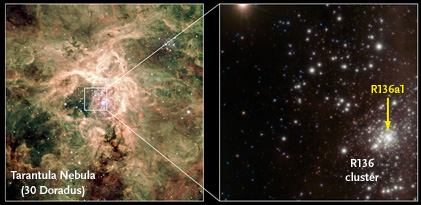Welcome to the Series of Dazzling thing in the Universe:- (Part -1)
The above symbol is called Yin Yang, it is a Taijitu meaning diagram of the supreme ultimate.
 |
| Yin Yang |
The principle of Yin Yang opposites existing in harmony, is associated with ancient Chinese philosophy.
But the very first use of the iconography the class symbol,, actually comes from a Shield pattern used by the ancient Romans 700 years before.
Its first known use in China.
A connection between the two yet to be found. Regardless of who came up with it first, the symbol was a bright idea.
But what's the brightest thing in the Universe?
Commonly used when stargazing refers to how bright an object appears to us, say when looking up from Earth.
It depends upon Earth-centric factors, like how close the object is to our planet.
Magnitudes are logarithmic and arranged like golf, where a smaller number means a greater brightness.
But today, I'm looking for Absolute Magnitude, a measure of how bright things all over the Universe near and far would be if we looked at them from the same distance.
Absolute Magnitude will guide us to the most blending light in the Universe, irrespective of it looking faint to us here on Earth, just because its far away.
The difference is significant.
A 100-watt light bulb placed closer than 8 centimetres will appear brighter than the Sun in the sky. But that's not fair.
If you could see the Sun and the bulb from the same distance, the Sun would be a septillion times brighter.
That's bright.
If you could line up the Sun up with everything else out there giving every star a cosmological phenomena, a fair chance, the Sun's Absolute Magnitude would 4.8.
But check out R136a1. This star isn't the brightest star in terms of volume but it is 256 times more massive than our Sun.
 |
| R136a1 |
It's the most massive star ever found and it's also the brightest.

No comments:
Post a Comment
Let me know guys what you think about this.